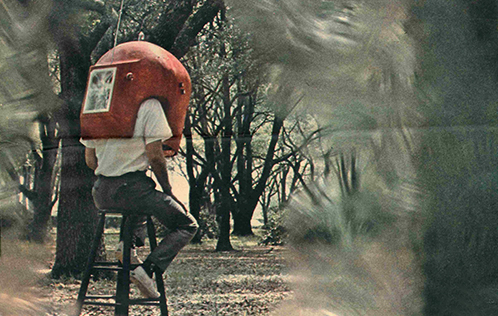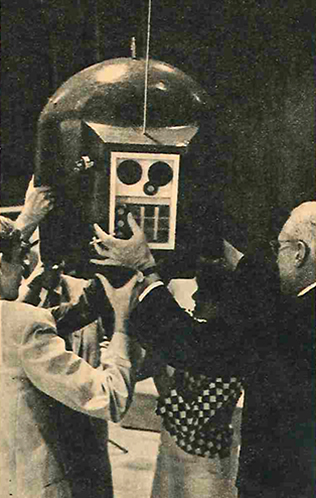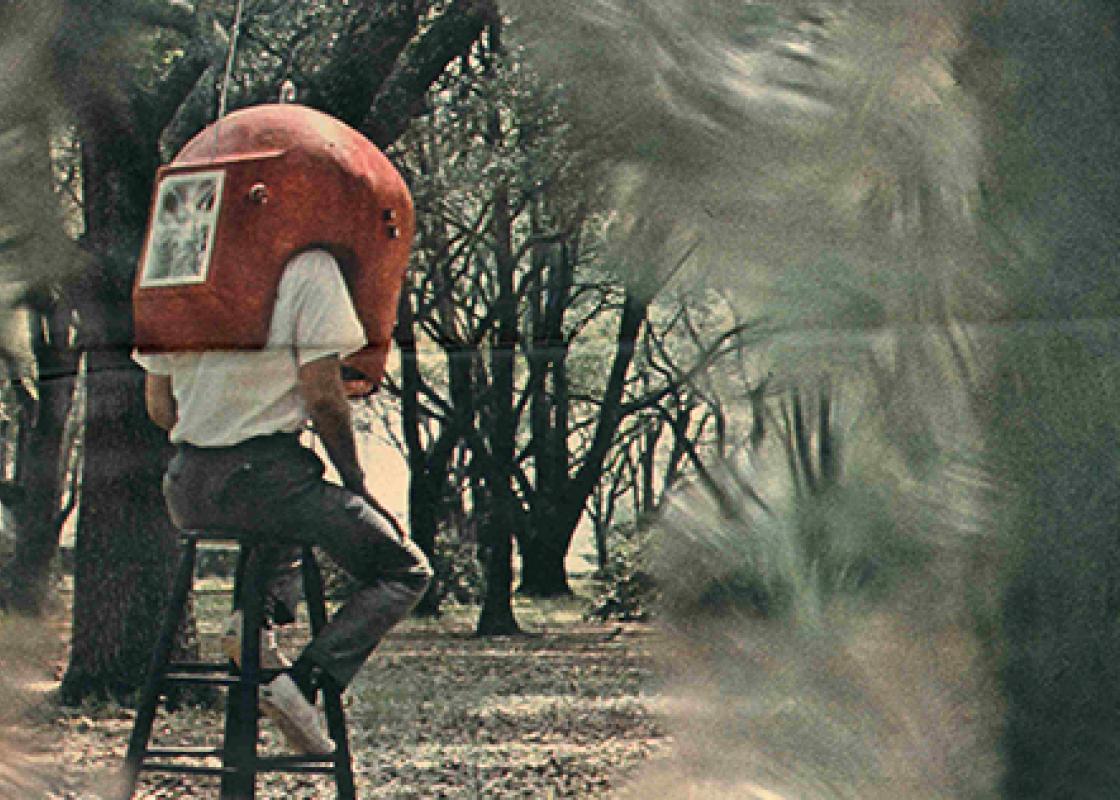
Photos from Houston Chronicle August 20, 1967.
The following post includes photo outtakes and details not included in "New Schools for New Towns," published in Cite 92, a special issue on education available now at Brazos Bookstore, CAMH, MFAH, Issues, River Oaks Bookstore, and other stores. If this interests you, buy yourself a copy!
Forty-six years ago, the concept of a Google Glass-like convergence device had already been dreamed up by architect Charles Colbert. And the model was tested on a young Denise Scott Brown, co-author of the hugely influential Learning from Las Vegas. The bright red device, called "The Shoulder Carrel," would have weighed about 20 pounds and incorporated "UHF-VHF TV, tapes, records, computer connections, two-way radio, telephone, slide projectors, and screens."
A little-known book published in 1970, New Schools for New Towns, presents the The Shoulder Carrel along with other writings, drawings, and photographed models from a Rice Design Fete held the first week of June 1967 on the campus of Rice University and directed by faculty member William Cannady. The book is a treasure trove of prescient analysis by six teams led by prominent architects: Cedric Price, Robert Venturi, Paul Kennon, Charles Colbert, Niklaus Morgenthaler, and Thomas Vreeland. You can download the book without any charge here.

Architect Charles Colbert puts final touches on the fiber glass shoulder carrel.

Colbert and students place the carrel on Denise Scott Brown.
The design fete imagined hypothetical towns built from the ground up with new models for education often integrated into the infrastructure, including a network of wires connected to interactive screens and virtual-reality helmets, screens built into school bus seats to use commute time as instruction time, mobile educational units on tracks that could be assembled into temporary school clusters, and plans for school buildings with no traditional classrooms.
Then a Rice student, Danny Marc Samuels recalls that the leader of his team, Robert Venturi, went missing for a day and was later found out to have been touring Houston with his future wife, Denise Scott Brown, who was, at the time, an associate professor of architecture at UCLA. They were to become among the most influential designers of their generation and would return to Houston to design the Children's Museum. Imagine all these new ideas and collaborations taking root the same week of the Six-Day Arab-Israeli War and the Beatles' release of Sgt. Pepper's Lonely Hearts Club Band.










